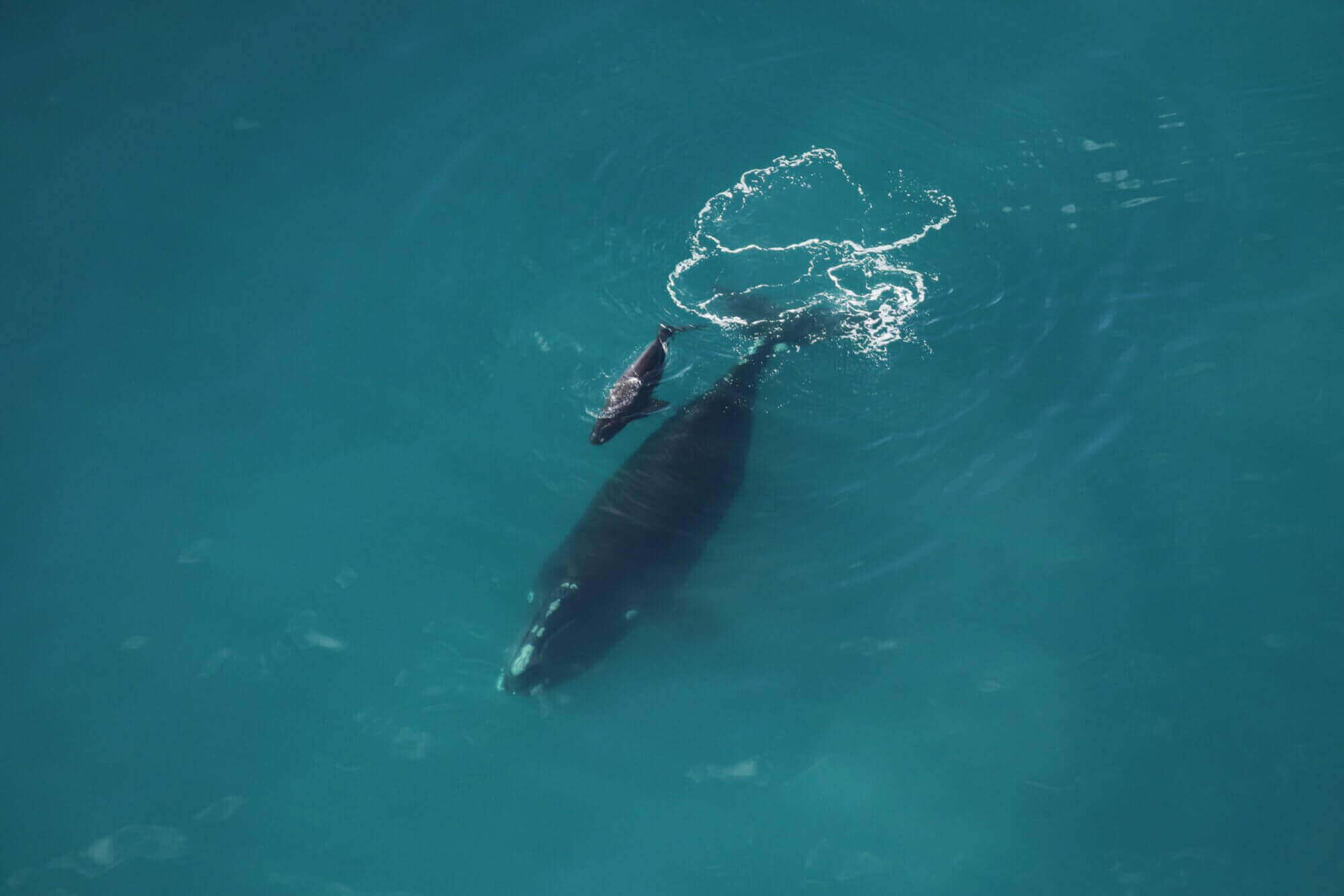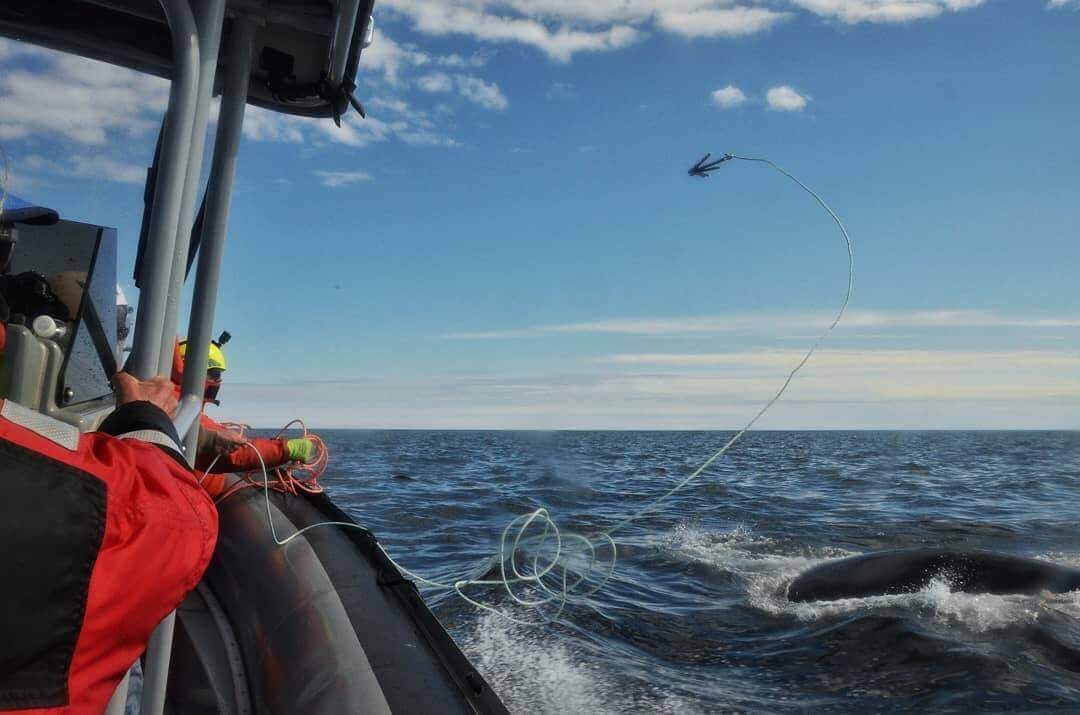In December 2021, scientists felt a glimmer of hope when Snow Cone was spotted with a newborn, despite the fact that she had gotten herself ensnared in fishing gear for the fourth time. However, the scientists who saw her 7 months later, i.e. in July 2022, painted a rather bleak picture of her physical condition, in addition to noting the absence of her calf by her side. On September 21, Snow Cone was observed in southern Massachusetts by experts from the New England Aquarium. The news is not good: Snow Cone appears to be doomed.
A breeding female offering hope for her species
Snow Cone is one of approximately 350 individuals remaining in the endangered North Atlantic right whale population, which continues to be plagued by ship strikes and entanglements in fishing gear. Snow Cone gets her name from an ice cream cone-shaped protuberance at the front of her blowhole. This 17-year-old whale born in 2005 was attributed ID no. 3560 by scientists from the New England Aquarium (Anderson Cabot Center for Ocean Life). Being a female, Snow Cone is of particular importance to the survival of her species since the birth and survival of calves are the only hope that the population might eventually recover. According to Philip Hamilton, senior scientist at the New England Aquarium, the premature death of a female can deprive the population of 25 to 30 new whales that would otherwise be born to the said female and her offspring. To date, Snow Cone has been seen with two calves – in 2020 and 2021 – and has been identified in the Gulf of St. Lawrence in 2017, 2018, 2019 and 2020.
When misfortune strikes
In March 2021, Snow Cone was spotted lugging hundreds of feet of fishing gear. An initial release operation then took place, followed by a second one in May 2021, during which a large quantity of rope was removed. Unfortunately, Snow Cone remained entangled, in addition to being seriously injured, with part of the rope having become embedded in her upper jawbone. When she was seen again in July 2022, her physical condition had deteriorated; she was emaciated and had skin lesions. At this time, experts affirmed that her injuries were probably causing her a great deal of pain and were likely affecting her quality of life, including her ability to eat, reproduce, swim and survive.
Just two months later, on September 21, 2022, New England Aquarium scientists spotted Snow Cone south of Nantucket during an aerial survey and found her in much worse condition than before. The whale is now dragging even more fishing gear than it was in July, meaning she has suffered a fifth entanglement, even if she was never fully freed from the fourth one. Her state of health is very concerning. Snow Cone is abnormally slow and seems unable to dive. Her body shows teeth marks and is covered with whale lice, which is a sign of poor health. Her inability to replace the extra energy she expends dragging these nets is reflected in her body condition, which has worsened considerably since July. Scientists are convinced that her death is inevitable.
A family story
Snow Cone’s battle to survive anthropogenic threats is not unique. Over 86% of North Atlantic right whales have experienced an entanglement in the course of their lifetimes. Several individuals have fallen victim at least twice, and some even up to eight times! What’s more, researchers have observed that over time, entanglements become increasingly severe.
Snow Cone won’t be the first member of her family to die prematurely. Her first calf, born in 2020, perished at the age of six months after it was struck by a ship. Her sister Infinity’s calf suffered a similar fate in 2021. Cottontail, Snow Cone’s nephew, also died in an entanglement in 2021. Lastly, her 2nd calf has not been relocated.
Since 2017, North Atlantic right whales have been experiencing higher-than-normal mortality rates and only about 350 individuals are believed to remain in the entire population. Between 2017 and 2022, the National Oceanic and Atmospheric Administration (NOAA) documented multiple cases of fatalities and serious injuries, many stemming from collisions and entanglements. Animals categorized as “serious injuries” are considered to be at high risk of dying from their wounds. In 2022, a total of three whales have sustained serious injuries while no mortalities have yet to be confirmed. The individuals injured by entanglement are Sundog (#3823), Meridian (#1403) and the calf of #3720.
The high number of North Atlantic right whales that die or sustain serious human-caused injuries underscores the importance of taking action and implementing conservation measures to eliminate or significantly reduce entanglements and ship strikes.
Learn more
2017-2022 North Atlantic Right Whale Unusual Mortality Event (NOAA Fisheries, September 27, 2022)
2021-22 North Atlantic Right Whale Mother and Calf Pairs (New England Aquarium, March 3, 2022)
North Atlantic Right Whale Catalog (New England Aquarium)
Snow Cone’s triumph and tragedy (Environment America, December 29, 2021)
The Plight of Snow Cone (New England Aquarium, August 4, 2022)








